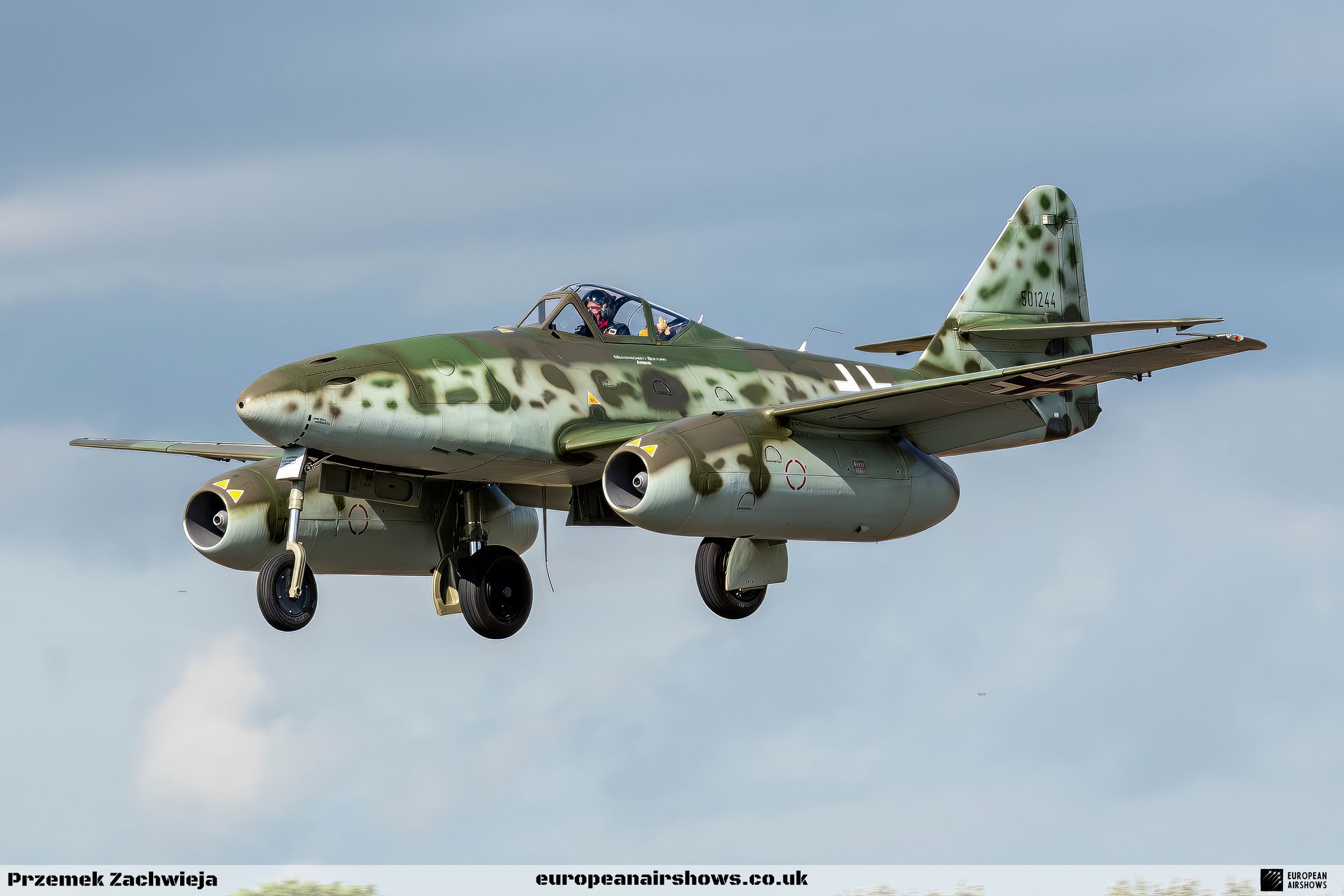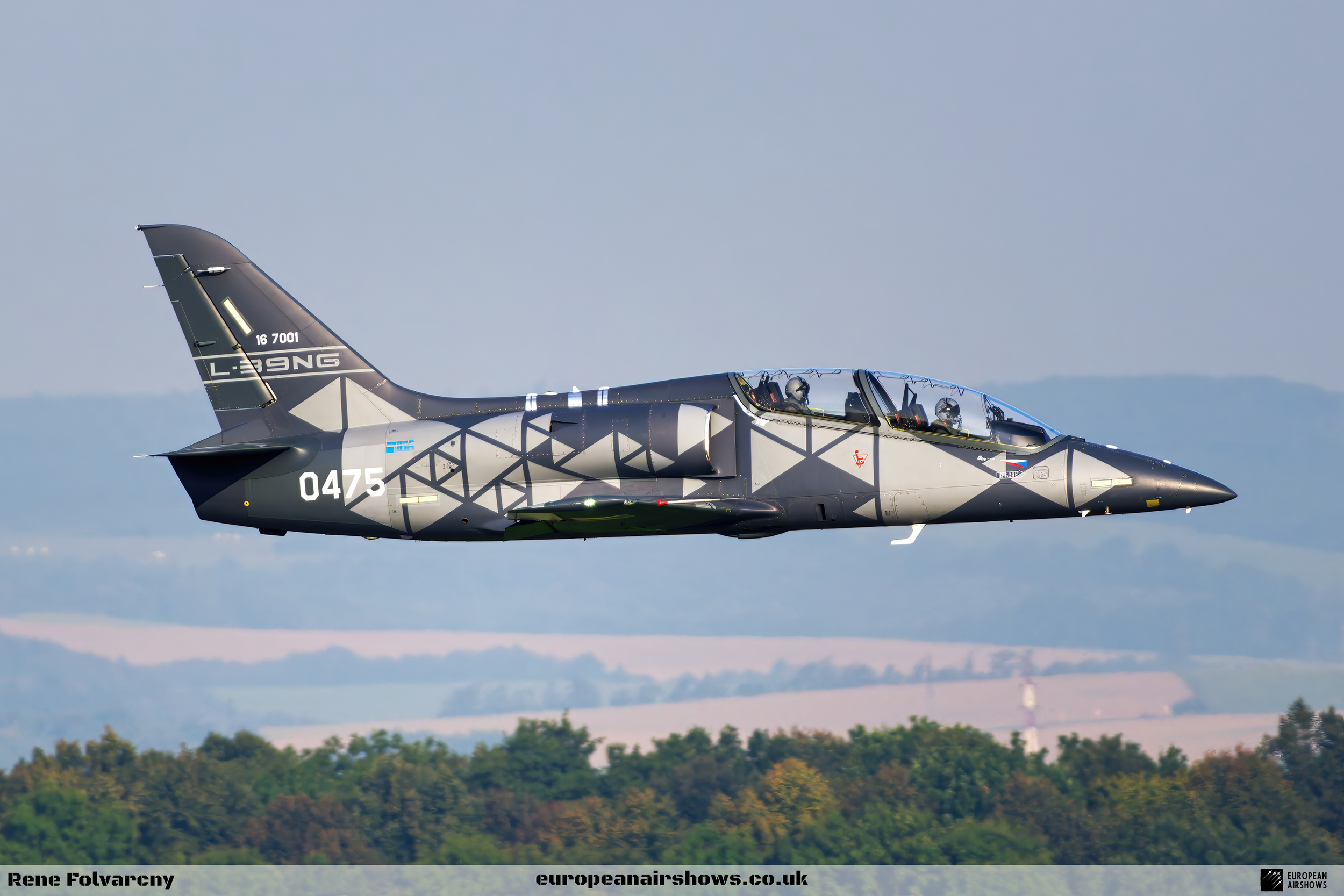Aviaticka pout 2024: Messerschmitt Me 262 and Bf109 among the latest confirmations
Aviation enthusiasts, brace yourselves! The organizers of the Aviaticka pout-Pardubice Aviation Fair have released an exciting update regarding the flying display. In addition to the already impressive line-up of aircraft, they have added the very rare Bf 109 and Me 262, along with the L-39NG, to the list of flying participants.
One of the aircraft is the rare 1944 Messerschmitt Bf109 G-14, which will be coming from Hangar 10 at Heringsdorf Airport in Zirchow, Germany. This aircraft is powered by the original Daimler Benz V-12 inverted liquid-cooled piston engine that generates 1,455 hp. This addition is even more special because this aircraft will be flying in the Czech sky for the first time since World War II.
Me 262 at RIAT 2023
The Me 262, on the other hand, is Europe's only airworthy replica of the Messerschmitt Me 262 Swallow, the first jet fighter ever to reach operational service. Currently, there are only four airworthy replicas of this aircraft worldwide, and only one example is flying in Europe. The aircraft that will be part of the event is registered as D-IMTT and is operated by Flugmuseum Messerschmitt. It is also supported by the Airbus Heritage Flight.
The third aircraft that has been added to the lineup is the Aero Vodochody's L-39NG. This aircraft is a successor of the Cold War era Aero L-39 Albatros. The L-39NG (next generation) is the latest multi-role, advanced jet trainer aircraft that has been designed by Aero Vodochody Aerospace. It is intended to provide enhanced military flight training capabilities that are required for fourth and fifth-generation fighters. This aircraft is a significant addition to the event for aviation enthusiasts who would love to get a closer look at the latest military flight training capabilities.
With these rare and impressive aircraft joining the flying display, the Aviaticka pout-Pardubice Aviation Fair is set to be an event to remember. The event is scheduled to take place on June 1 and 2, 2024, at the Pardubice Airport in the Czech Republic.
If you're interested in attending the event, you can visit aviatickapout.cz to learn more and purchase tickets.
Messerschmitt Bf109 in flight (Hangar 10 / Richard Paver Copyright)
Messerschmitt Bf109
The Messerschmitt Bf 109 was a crucial fighter aircraft used by the German Luftwaffe during World War II. Alongside the Focke-Wulf Fw 190, it was the backbone of the Luftwaffe's fighter force. The Bf 109 made its debut in operational service during the Spanish Civil War in 1937, where it proved to be an excellent fighter aircraft. It continued to serve throughout World War II, ending its service in 1945.
One of the most notable features of the Bf 109 was its advanced design, which included an all-metal monocoque construction, a closed canopy, and retractable landing gear. It was powered by a liquid-cooled, inverted V12 aero engine, which made it one of the fastest and most agile fighter aircraft of its time.
Despite being known as the Bf 109 in Germany, Allied aircrew referred to it as the Me 109, and some German aces also used this name. The Bf 109 was a fearsome adversary in the skies, and it played a significant role in many of the Luftwaffe's most significant operations during the war. Its legacy lives on and is still considered one of the most advanced and successful fighter aircraft of the World War II era.
Messerschmitt Me 262
The Messerschmitt Me 262, a fighter aircraft and fighter-bomber, is a remarkable feat of engineering that was designed and produced by the German aircraft manufacturer Messerschmitt. It was the world's first operational jet-powered fighter aircraft.
The design process for the Me 262 began in April 1939, before the outbreak of World War II. Its maiden flight took place on 18 April 1941, equipped with a piston engine. The aircraft's first jet-powered flight was on 18 July 1942. However, progress was impeded by various challenges such as problems with engines, metallurgy, and interference from Luftwaffe chief Hermann Göring and Adolf Hitler. Hitler demanded that the Me 262, originally conceived as a defensive interceptor, be redesigned as a ground-attack/bomber aircraft.
The Me 262 became operational with the Luftwaffe in mid-1944. It was faster and more heavily armed than any Allied fighter, including the British jet-powered Gloster Meteor. The aircraft had a maximum speed of 870 km/h (540 mph) and was armed with four MK 108 30mm cannons. It was also capable of carrying two 500 kg bombs or 24 55 mm rockets.
Despite the Me 262's superior capabilities, the Allies counteracted its effectiveness by attacking the aircraft on the ground and during takeoff and landing. The Allied forces recognized the threat posed by the Me 262 and undertook various measures to reduce its impact on the war.
Aero L-39NG
The Aero L-39NG, also known as the "Next Generation," is a highly advanced military aircraft designed for training and light combat operations. This turbofan-powered aircraft is developed and produced by the Czech-based Aero Vodochody, a renowned aerospace company with a long history of producing high-quality aircraft.
The L-39NG is a successor to the Cold War-era Aero L-39 Albatros, a popular jet trainer aircraft used by several countries worldwide. However, the L-39NG is a significant improvement over the older version, featuring a more powerful engine, advanced avionics, and a modernized cockpit.
The aircraft is equipped with a Williams International FJ44-4M engine that provides a maximum thrust of 3,400 pounds, enabling it to reach a maximum speed of 750 km/h. The L-39NG has a maximum range of 2,600 kilometres and can operate at an altitude of up to 11,000 meters.
One of the L-39NG's most significant features is its modernized cockpit, which is fully compatible with the latest generation of avionics systems. The aircraft is equipped with a glass cockpit featuring a large colour multifunction display, digital flight instruments, and a head-up display.
In addition to its training capabilities, the L-39NG is also designed for light combat operations, with provisions for mounting various weapons systems. The aircraft can carry up to 1,455 kg of external stores, including rockets, missiles, bombs, and gun pods.












